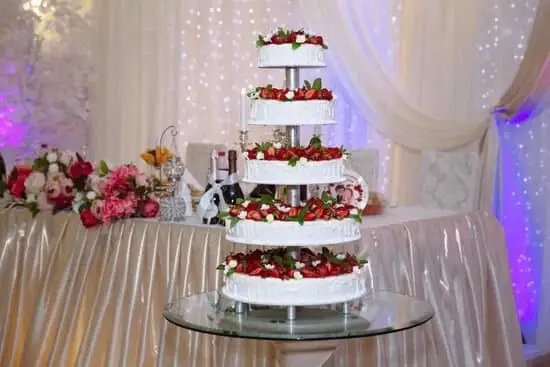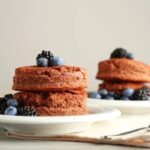Cake decorating is an art form that can truly elevate the presentation of a cake, turning it from a simple dessert into a stunning centerpiece. However, when done poorly, bad cake decorating can leave a lasting impression for all the wrong reasons. Whether it’s uneven frosting, sloppy piping, or just an overall unappealing design, a poorly decorated cake has the potential to ruin an event and disappoint guests.
The skill and techniques required for successful cake decorating are not to be underestimated. From mastering buttercream consistency to creating intricate designs with fondant, there is a lot that goes into turning a plain cake into a work of art. Without proper attention to detail and practice, even the most delicious cake can fall flat if the decoration doesn’t live up to expectations.
In this article, we will delve into the world of cake decorating – exploring common mistakes, disastrous fails shared on social media platforms, and real-life horror stories that serve as cautionary tales. By understanding the impact of bad cake decorating and learning how to avoid such disasters, readers can ensure that their cakes not only look good but taste delicious as well. Stick around for tips on improving your cake decorating skills and some entertaining anecdotes along the way.
The Art of Cake Decorating
Cake decorating is not just about making a cake look pretty; it is an art form that requires skill, patience, and creativity. Successful cake decorating involves mastering various techniques such as piping, fondant sculpting, and using edible decorations. To create visually appealing cakes, decorators must have a good understanding of color theory, composition, and balance. Additionally, attention to detail is crucial in achieving professional-looking results.
One of the key skills in cake decorating is icing consistency. Different types of frosting require different consistencies for optimal results. For example, buttercream should be smooth and spreadable for covering cakes smoothly, while royal icing needs to be thick enough to hold its shape when piped onto cookies or cupcakes. Understanding how to achieve the right consistency for each type of icing is essential for successful cake decorating.
Another important aspect of cake decorating is mastering piping techniques. Piping allows decorators to create intricate designs on cakes using various tips and techniques. From simple borders and rosettes to elaborate flowers and intricate patterns, piping skills can elevate a plain cake into a work of art. Practice is key when it comes to mastering piping techniques, as precision and control are crucial for achieving clean lines and beautiful designs.
| Skill | Description |
|---|---|
| Icing Consistency | Different frosting types require specific consistencies for optimal results. |
| Piping Techniques | Mastering piping allows decorators to create intricate designs on cakes. |
Common Mistakes in Cake Decorating
Cake decorating is a crucial aspect of creating a visually appealing and delicious cake. However, even the most experienced bakers can fall victim to common mistakes that can ruin the entire cake decorating process. From uneven frosting to sloppy piping, these mistakes can turn a beautifully baked cake into a disaster. Here are some of the most frequent mistakes made in cake decorating that you should be aware of:
- Uneven frosting: One of the most common mistakes in cake decorating is applying frosting unevenly across the cake’s surface. This can result in an unprofessional and messy appearance, detracting from the overall presentation.
- Sloppy piping: Piping decorations onto cakes requires precision and steady hands. However, many decorators struggle with maintaining consistent pressure while piping, leading to squiggly lines or uneven designs that are far from perfect.
- Color consistency: Achieving consistent color when tinting frosting can be challenging for some bakers. Mismatched shades or streaky colors can make the cake look unappealing and amateurish.
These mistakes may seem minor, but they can have a significant impact on the final product. A poorly decorated cake not only looks unattractive but can also affect its taste and texture. It’s essential to pay attention to detail and avoid these common pitfalls to ensure that your cakes are visually stunning and delicious.
In order to avoid falling into the trap of bad cake decorating, it’s crucial to practice patience and precision when decorating your cakes. Taking the time to perfect your techniques and skills can make all the difference in creating a show-stopping dessert that will impress your guests. Remember, practice makes perfect, so don’t get discouraged by initial failures – instead, use them as learning opportunities to improve your craft.
Disastrous Cake Decorating Fails
When Cake Decorating Goes Wrong
Cake decorating can be a fun and creative process, but unfortunately, not every attempt turns out as planned. From birthdays to weddings, poorly decorated cakes can leave a lasting impression for all the wrong reasons. Social media platforms are filled with images of cakes that missed the mark, whether it’s due to uneven frosting, lopsided layers, or questionable design choices. These disastrous cake decorating fails often serve as cautionary tales for aspiring bakers and decorators.
Embarrassing Creations Shared Online
Thanks to the power of social media, cake decorating fails have become a source of entertainment for many. Amateur bakers and professional pastry chefs alike have shared their most cringe-worthy creations online, inviting both laughter and sympathy from viewers. Some common mishaps include misspelled words on birthday cakes, melted frosting sliding off the sides, or attempts at intricate designs gone horribly wrong. Despite the best intentions, bad cake decorating can quickly turn a celebration into a memorable disaster.
Learning From Mistakes
While it’s easy to laugh at the unfortunate results of bad cake decorating, there are valuable lessons to be learned from these experiences. Mistakes happen to even the most seasoned bakers, but it’s how they handle those mishaps that truly defines their skills.
By studying what went wrong in a failed cake decorating attempt, individuals can identify areas for improvement and refine their techniques for future projects. Ultimately, embracing failures in cake decorating can lead to growth and mastery in this culinary art form.
Impact of Bad Cake Decorating
The impact of bad cake decorating goes far beyond just the visual aspect of a cake. While a beautifully decorated cake can enhance the overall presentation of an event and delight guests, a poorly decorated cake can do quite the opposite.
Picture this: uneven frosting, lopsided layers, or sloppy piping can take away from the taste and enjoyment of a cake, no matter how delicious it may be on the inside. The appearance sets the tone for what to expect, and bad cake decorating can leave a lasting negative impression.
Aside from affecting the visual appeal, bad cake decorating can also impact the taste of a cake. Uneven frosting or excessive use of food coloring can alter the flavor profile of a cake, masking its true taste or making it unappetizing.
The texture of frosting that is applied too thickly or with visible air bubbles can also detract from the overall eating experience. In essence, bad cake decorating not only affects how a cake looks but also how it tastes, ultimately influencing the enjoyment of those who partake in it.
Furthermore, poorly decorated cakes can have implications for special occasions or celebrations where cakes play a significant role. Imagine presenting a badly decorated cake at a birthday party or wedding – it could dampen the mood and affect the significance of the event.
People often associate cakes with happiness and celebration, so serving a poorly decorated one might inadvertently convey carelessness or lack of effort. This highlights the importance of paying attention to detail in cake decorating to ensure that every slice brings joy and satisfaction to those enjoying it.
| Aspect | Impact |
|---|---|
| Visual Appeal | Affects overall presentation and impression |
| Taste | Can alter flavor profile and texture negatively |
| Celebrations | Impacts important events by conveying carelessness |
Tips for Avoiding Cake Decorating Disasters
Cake decorating is an art form that requires skill, patience, and attention to detail. A poorly decorated cake can ruin not only the visual appeal of an event but also the overall taste and enjoyment of the dessert. To improve your cake decorating skills and avoid common mistakes, here are some practical tips and advice:
- Use the right tools: Investing in quality cake decorating tools such as piping bags, tips, offset spatulas, and a turntable can make a significant difference in the outcome of your decorated cakes.
- Practice makes perfect: Before attempting intricate designs on a special occasion cake, practice your skills on parchment paper or a dummy cake first. This will help you perfect your technique and build confidence.
- Choose the right frosting consistency: The consistency of your frosting is crucial in achieving smooth and even decorations. Make sure to adjust the thickness of your frosting by adding more powdered sugar for stiffer consistency or milk for a thinner one.
Another key aspect to consider when avoiding bad cake decorating results is proper planning and organization:
- Plan ahead: Begin by sketching or visualizing the design of your cake before starting to decorate. Having a clear plan in mind will help you stay focused and avoid making mistakes along the way.
- Work in stages: Break down the decorating process into manageable stages, such as icing the cake, piping decorations, and adding finishing touches. This will help you stay organized and ensure that each step is executed properly.
- Learn from mistakes: It’s normal to make mistakes in cake decorating, but it’s essential to learn from them. Take note of what went wrong in previous decorations and use that knowledge to improve your skills going forward.
By following these tips and practicing regularly, you can enhance your cake decorating abilities and create stunning desserts that will impress both visually and tastewise. Remember, good preparation, attention to detail, and perseverance are key elements in avoiding bad cake decorating experiences.
Cake Decorating Horror Stories
When Good Intentions Go Awry
One memorable cake decorating horror story involves a well-meaning aunt who attempted to surprise her niece with a homemade birthday cake. Armed with a piping bag and some food coloring, she set out to create a vibrant and whimsical design on the cake. However, her lack of experience in cake decorating soon became evident as what was supposed to be a delicate floral pattern turned into a messy blob of colors.
The end result resembled more of an abstract art piece gone wrong than a celebratory dessert. The lesson learned from this experience? Sometimes, it’s better to stick with simple designs until you’ve mastered the basics.
When Expectations Meet Reality
In another cake decorating disaster, a newlywed couple decided to cut costs by making their own wedding cake. With dreams of a picture-perfect confection dancing in their heads, they ambitiously embarked on the task without realizing the intricacies involved in creating a tiered masterpiece.
As time ran out and stress levels peaked, what should have been an elegant three-tiered cake ended up looking lopsided and uneven, with slanted layers threatening to topple over at any moment. This cautionary tale serves as a reminder that professional cake decorators undergo years of training for a reason – it’s not as easy as it looks.
The Importance of Practice
Lastly, one amateur baker shared their embarrassing cake decorating fail when attempting to recreate a trendy drip cake they saw on social media. Eager to impress their friends at a potluck party, they poured hot ganache over the top layer of their chocolate cake without waiting for it to cool down first. The result?
A melting mess of chocolatey goodness cascading down the sides of the cake like a waterfall-gone-wrong. This mishap taught them the valuable lesson that patience and practice are key in achieving professional-looking results in cake decorating – rushing through the process often leads to disaster.
These real-life stories highlight the importance of honing your cake decorating skills through practice, patience, and perseverance. While bad cake decorating experiences may leave you feeling discouraged, they also offer valuable lessons that can help you avoid similar mistakes in the future. Remember, even the most seasoned bakers once faced their fair share of disastrous creations – it’s all part of the learning process towards becoming an expert in the art of cake decorating.
Conclusion
In conclusion, the art of cake decorating plays a crucial role in not only the aesthetic appeal but also the overall success of any celebratory event. As discussed throughout this article, a poorly decorated cake can have a significant impact on the presentation and even the taste of the dessert. It is essential for aspiring bakers and decorators to recognize the importance of honing their skills and techniques to avoid falling victim to bad cake decorating experiences.
With the skills and knowledge outlined in this article, individuals can take proactive steps to enhance their cake decorating abilities and ensure that their creations are visually stunning and delicious. By understanding common mistakes and learning from disastrous cake decorating fails, readers can equip themselves with valuable insights to improve their craft.

Welcome to our cake decorating blog! My name is Destiny Flores, and I am the proud owner of a cake decorating business named Cake Karma. Our mission is to provide delicious, beautiful cakes for all occasions. We specialize in creating custom cakes that are tailored specifically to each customer’s individual needs and tastes.





